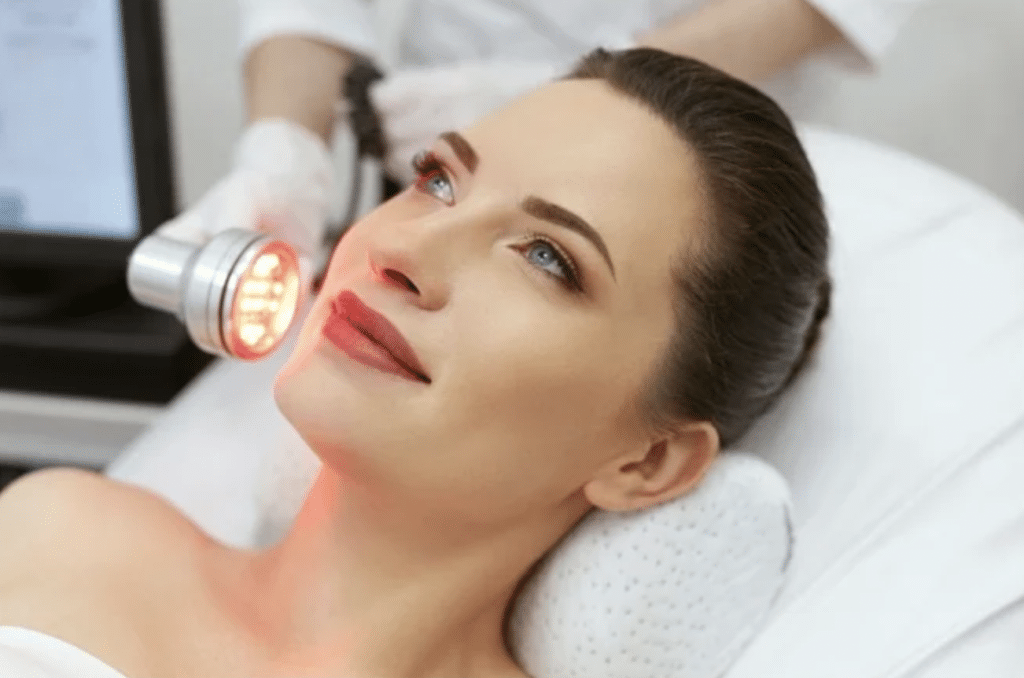Acne, a very common skin condition, affects millions of folks worldwide, impacting not only physical appearance but also self-esteem and overall well-being. While various treatment options are available, one promising and innovative approach is photon light treatment. In this discourse, you will explore the benefits and mechanisms of photon light therapy for acne and how it relieves individuals dealing with mild to severe acne.
1. Understanding Acne: A Complex Skin Condition
Before delving into photon light treatment, it’s crucial to comprehend the complexity of acne. Acne occurs when hair follicles become jammed with dead skin cells and oil, forming pimples, blackheads, whiteheads, and even cysts. It can be influenced by hormonal changes, genetics, diet, and skincare habits, making it a challenging condition to manage.
2. The Power of Photon Light Treatment
Photon light treatment, also known as LED or Light light-emitting Diode therapy, utilizes specific wavelengths of light to target and address various skin concerns, including acne. Red and blue light wavelengths are commonly used in these treatments. Blue light targets the bacteria (Propionibacterium acnes) responsible for acne breakouts, while red light reduces inflammation and promotes healing.
3. Blue Light: Bacteria Buster
Blue light, with its shorter wavelength, is highly effective in killing acne-causing bacteria. When directed at the skin, it penetrates the sebaceous glands, where these bacteria reside. Blue light activates a molecule called porphyrin within the bacteria, producing free radicals that ultimately destroy the bacteria. As a result, acne lesions become less inflamed, reducing the risk of future breakouts.
4. Red Light: Inflammation Reduction and Healing
With its longer wavelength, red light focuses on reducing inflammation and promoting skin healing. It can penetrate deeper into the skin’s layers, targeting inflamed areas affected by acne. Red light stimulates the production of collagen, a protein that plays a crucial part in skin repair and regeneration. This helps to fade acne scars and restore the skin’s natural texture.
5. Pain-Free and Non-Invasive Treatment
One of the notable advantages of photon light treatment for acne is its non-invasiveness and lack of pain. LED therapy is gentle and pain-free, unlike other procedures that may cause discomfort or require downtime. It does not involve incisions, chemicals, or medications, making it suitable for individuals seeking non-pharmacological and non-surgical acne solutions.
6. Suitable for Various Acne Types
Photon light treatment is versatile and can be adapted for different types of acne, from mild to severe. Whether dealing with occasional breakouts, persistent blackheads, or cystic acne, LED therapy can be customized to target specific concerns. It is also suitable for sensitive skin, as it is gentle and well-tolerated.
Conclusion
In pursuing clear and healthy skin, photon light therapy emerges as a promising and effective approach for acne relief. Its ability to target acne-causing bacteria, reduce inflammation, and promote skin healing makes it a valuable addition to acne treatment options. Moreover, its non-invasive and pain-free nature makes it accessible and appealing to multiple individuals seeking relief from acne.
While photon light treatment can provide significant benefits for acne sufferers, consulting with a skincare professional or dermatologist before starting any treatment regimen is essential. They can assess the different needs of the individual, recommend the most suitable wavelengths and intensity of light, and monitor progress over time.
As research and technology advance in skincare, photon light treatment holds promise for further innovation and refinement. Its potential to improve the physical appearance and the emotional well-being of individuals with acne underscores its significance in skincare.
